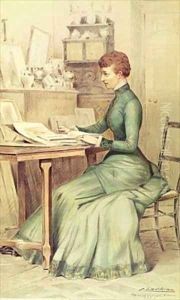Chartran, Theobald Paintings
Théobald Chartran was a classical French academic painter. Born on July 20, 1849, in Besançon, France, Chartran became renowned for his portraits and historical genre paintings. He was a student of the esteemed Alexandre Cabanel, a prominent French painter who was a leading exponent of the academic art tradition during the second half of the 19th century. Under Cabanel's tutelage, Chartran developed a refined painting style characterized by its elegance and technical precision.
Chartran gained recognition early in his career, winning the prestigious Prix de Rome in 1877. This award granted him the opportunity to study at the French Academy in Rome, a vital experience that further shaped his artistic approach. During his stay in Italy, he absorbed the influences of classical and Renaissance art, which informed his compositions and choice of subjects upon his return to France.
In the following years, Chartran became a regular exhibitor at the Paris Salon, the official art exhibition of the Académie des Beaux-Arts in Paris. He quickly established himself as a successful portraitist among the Parisian elite, depicting various figures of high society with a flattering style that contributed to his popularity. His portraits were noted for their sophisticated portrayal of character and society, often capturing the likeness and personality of his sitters with a graceful touch.
Apart from portraiture, Chartran also engaged in creating historical and allegorical works. His paintings often reflected the grandeur and romanticism of past eras, aligning with the tastes of the time. Despite the rise of Impressionism and other avant-garde movements that challenged the academic style, Chartran's work continued to be celebrated for its adherence to traditional artistic values.
Beyond France, Chartran's reputation crossed the Atlantic, and he was commissioned to create several notable works for prominent American patrons. His international success was also marked by his participation in the World's Columbian Exposition in Chicago in 1893, where his art was exhibited to a wider audience.
Théobald Chartran's career was also marked by his role as a teacher. He mentored numerous students, imparting the academic principles and techniques he had mastered. His influence extended through his pupils, many of whom went on to have successful careers of their own.
Chartran's life came to an untimely end when he passed away on July 16, 1907, in Paris. Despite the changing artistic landscape of the early 20th century, his work remains a testament to the skill and elegance of academic painting during the Belle Époque. His paintings can be found in various museums and private collections, continuing to be appreciated by those who value the artistry of the period.
